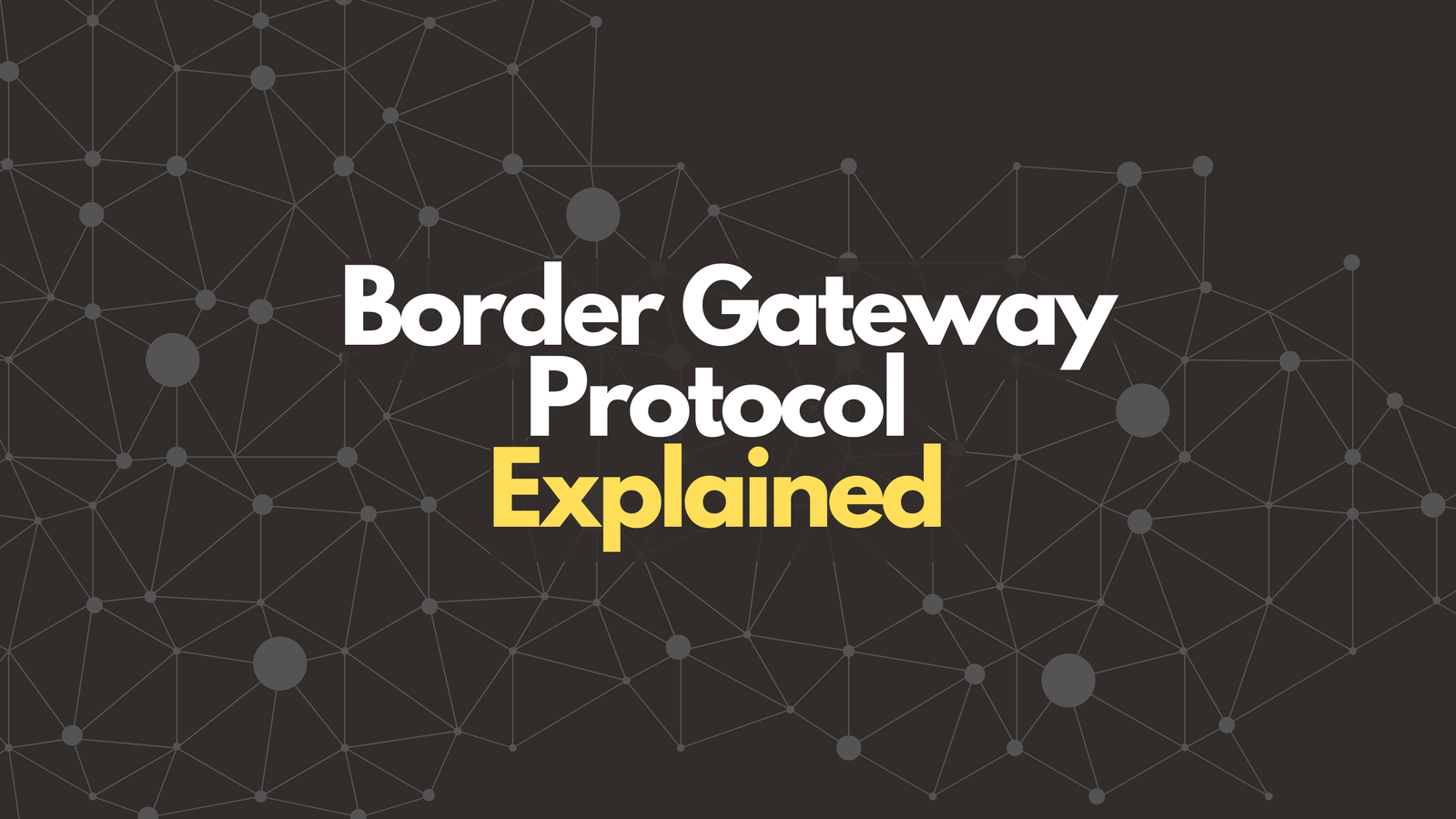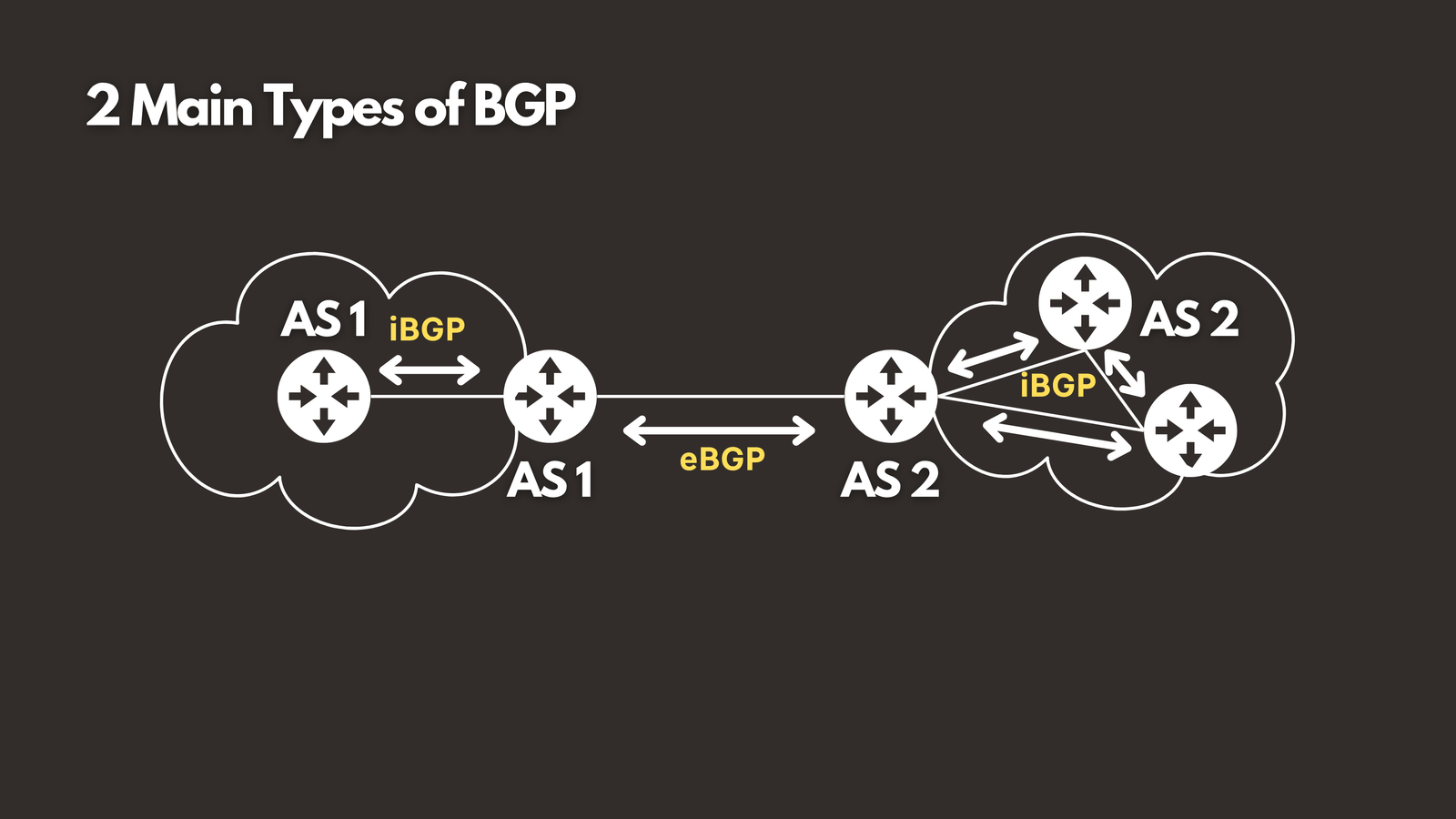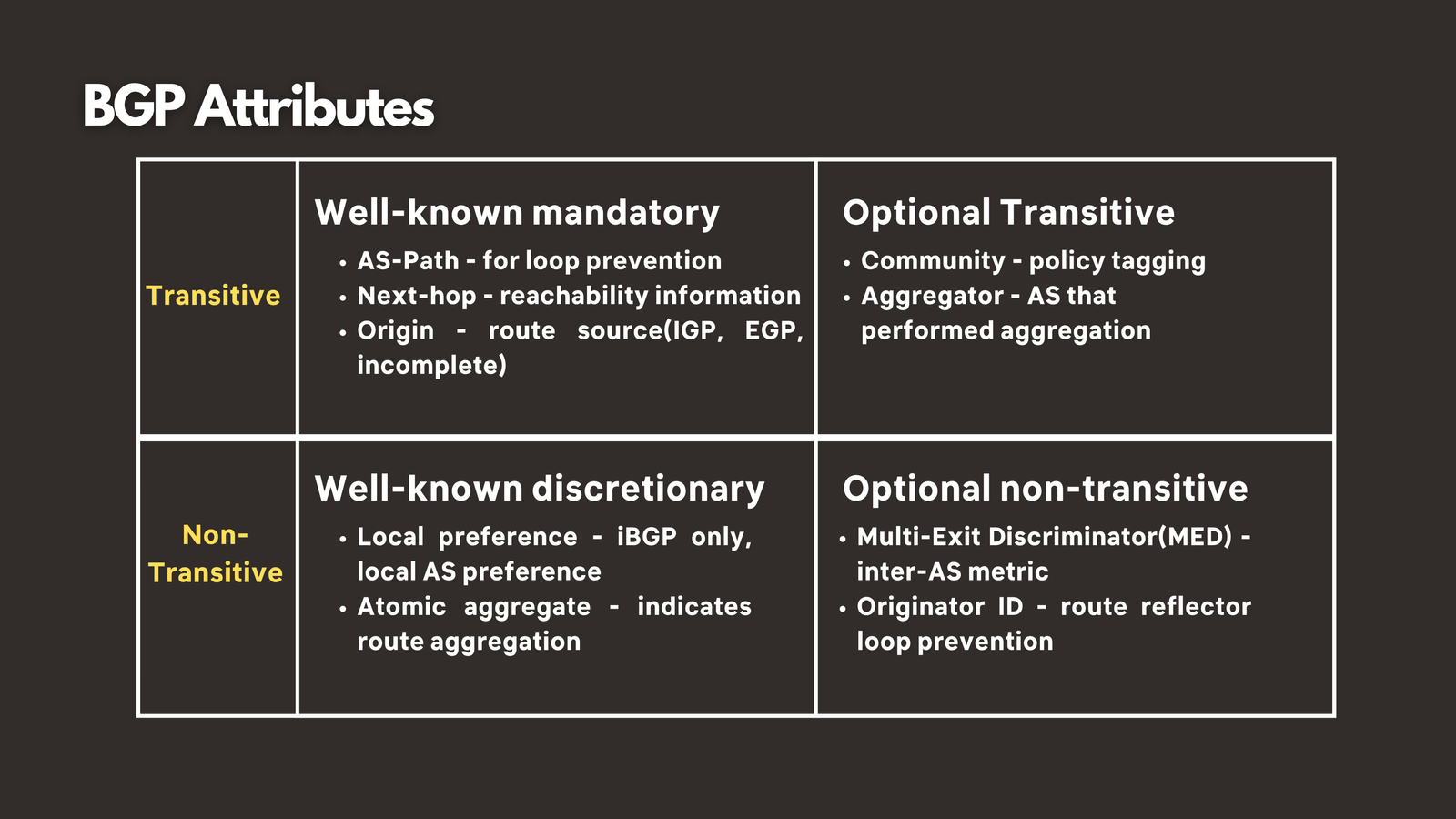BGP Explained: The Internet’s Routing Backbone Every Engineer Should Master

Have you ever wondered how your data magically finds its way across the vast expanse of the Internet? Whether you’re streaming a video from a server in Tokyo, sending an email to a colleague in London, or accessing a cloud service hosted in Virginia, there’s an intricate dance happening behind the scenes. Meet Border Gateway Protocol (BGP) – the routing protocol that literally holds the Internet together.
What Exactly is BGP?
Border Gateway Protocol is the standardized exterior gateway protocol designed to exchange routing information between autonomous systems (AS) on the Internet. Think of it as the postal system of the Internet – it determines the best path for data to travel between different networks worldwide.
Unlike interior protocols such as OSPF or EIGRP that work within a single organization’s network, BGP operates between different organizations, Internet Service Providers (ISPs), and even countries. Defined in RFC 4271, BGP is currently in version 4 and has been the backbone of Internet routing for decades.
Why BGP is Mission-Critical for Global Connectivity
BGP isn’t just another networking protocol – it’s absolutely essential for the Internet’s operation. Here’s why:
Massive Scale: BGP routes traffic between over 70,000 autonomous systems worldwide, creating a web of interconnected networks that spans the globe.
Policy-Based Intelligence: Unlike simple shortest-path algorithms, BGP enables sophisticated policy-based routing decisions. Organizations can control exactly how their traffic flows, implementing business rules and preferences.
Redundancy and Resilience: BGP provides multiple paths between destinations, offering automatic failover capabilities when network issues occur.
Enterprise Multi-homing: BGP makes it possible for organizations to connect to multiple ISPs simultaneously, ensuring connectivity even if one provider experiences outages.
Without BGP, there would be no Internet as we know it. Every time you access a website hosted by a different provider, BGP is working tirelessly behind the scenes to ensure your data reaches its destination.
How BGP Actually Works: The Technical Deep Dive
Understanding BGP requires grasping several key concepts that make it unique among routing protocols.
Path Vector Protocol Architecture
BGP operates as a path vector protocol, which is fundamentally different from distance-vector protocols. Instead of just knowing the distance to a destination, BGP maintains complete path information for every route. Each route advertisement includes the full Autonomous System path, providing comprehensive visibility into how data will travel across the Internet.
TCP-Based Reliability
Unlike most routing protocols that use UDP, BGP runs over TCP port 179. This choice makes BGP reliable and connection-oriented – essential characteristics for maintaining stable Internet routing. The TCP foundation ensures that routing updates are delivered reliably and in order.
eBGP vs iBGP: The Critical Distinction
BGP operates in two distinct modes, each with unique characteristics:

External BGP (eBGP) runs between different autonomous systems. These peers directly exchange routes and increment the AS path, providing natural loop prevention. When a route passes between ASes via eBGP, the receiving AS adds its own AS number to the path.
Internal BGP (iBGP) operates within the same AS. Here’s where it gets interesting – iBGP speakers do NOT modify the AS path, and they follow a strict split-horizon rule: routes learned from one iBGP peer are NOT advertised to other iBGP peers. This prevents loops within an AS but requires either a full mesh of iBGP sessions or the implementation of route reflectors.
BGP Attributes: The Decision-Making Framework
BGP uses path attributes to make routing decisions and control route propagation. These attributes fall into four distinct categories:

Well-Known Mandatory Attributes (always present and always propagated):
- AS Path (transitive): Used for loop prevention and path selection
- Next Hop (transitive): Provides reachability information
- Origin (transitive): Indicates route source (IGP, EGP, or incomplete)
Well-Known Discretionary Attributes (recognized by all BGP speakers but not always present):
- Local Preference (non-transitive): iBGP-only attribute for local AS preference
- Atomic Aggregate (non-transitive): Indicates route aggregation has occurred
Optional Transitive Attributes (propagated even if not understood by intermediate routers):
- Community: Used for policy tagging and route marking
- Aggregator: Identifies the AS that performed route aggregation
Optional Non-Transitive Attributes (stripped if not understood):
- MED (Multi-Exit Discriminator): Inter-AS metric for path preference
- Originator ID: Used by route reflectors for loop prevention
The key distinction between transitive and non-transitive attributes is crucial: transitive attributes are passed from one AS to another without modification, while non-transitive attributes are only passed to the immediate next-hop router.
The BGP Route Selection Process
BGP employs an extensive best path selection algorithm that considers multiple factors in a specific order:
- Highest Weight (Cisco-specific, local to router)
- Highest Local Preference (non-transitive, iBGP only)
- Local Routes (0.0.0.0)
- Shortest AS Path (transitive, primary eBGP loop prevention)
- Lowest Origin Type (transitive)
- Lowest MED (non-transitive, compared only between routes from the same neighboring AS)
- eBGP over iBGP preference
- Lowest IGP metric to next hop
- Oldest path
- Lowest router ID
- Lowest neighbor address
This comprehensive decision process ensures predictable and policy-compliant routing decisions across the global Internet.
Loop Prevention: The Safety Mechanisms
BGP implements multiple loop prevention mechanisms to maintain routing stability:
AS Path Attribute: eBGP routers automatically reject any route advertisement containing their own AS number in the AS path, preventing inter-AS loops.
iBGP Split-Horizon Rule: Routes learned from one iBGP peer are never advertised to other iBGP peers, preventing intra-AS loops.
Originator ID: Used by route reflectors to prevent loops in more complex iBGP topologies.
The Current State and Future of BGP
Today’s Internet operates on approximately 900,000 BGP routes in the global routing table – a number that continues to grow as more organizations connect to the Internet. The protocol continues evolving with enhancements like Multiprotocol BGP (MP-BGP) to support IPv6 and VPN services.
Despite its age and inherent limitations, BGP remains the backbone of Internet routing because it scales globally and provides the policy flexibility that the modern Internet requires. No other protocol can match BGP’s combination of scalability, policy control, and proven reliability at Internet scale.
Conclusion: The Internet’s Invisible Foundation
Border Gateway Protocol may not be the most glamorous aspect of networking, but it’s undoubtedly one of the most critical. Every click, every stream, every download depends on BGP working flawlessly behind the scenes.
For network engineers, understanding BGP isn’t just academic – it’s essential for working with Internet connectivity, multi-homing scenarios, and large-scale network design. Whether you’re pursuing CCNP or CCIE certification, working for an ISP, or designing enterprise networks, BGP knowledge will serve you well throughout your career.
The next time you effortlessly browse the web or stream your favorite content, take a moment to appreciate the elegant complexity of BGP – the protocol that makes global connectivity possible.
Want to dive deeper into BGP? Check out our video explanation covering these concepts in just 5 minutes - https://youtu.be/zjgPk01NOYY
 Packetbrew
Packetbrew